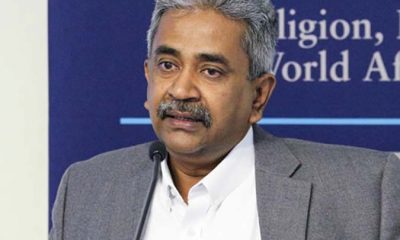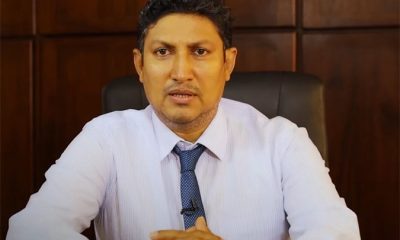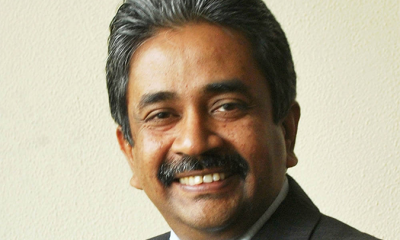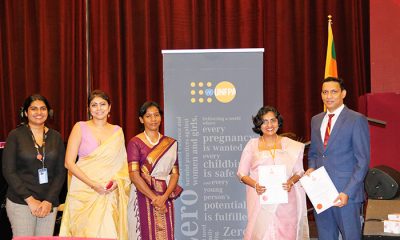Opinion
Challenge before Sri Lanka Medical Association

By Dr Upul Wijayawardhana
In this time of moral bankruptcy, on top of an enormous economic crisis, Sri Lanka Medical Association (SLMA) is facing a huge challenge; it has had to restore the honour of and respect for the medical profession. It is obvious that corruption has affected all professions, my long-cherished profession being no exception. The SLMA is the premier medical association in the country and the umbrella organisation that encompasses all medical men and women, whether they be specialists or general practitioners, government servants, employees of other organisations or independent practitioners.
The SLMA, which was established in 1887, as the Ceylon branch of the British Medical Association (BMA), severed connections with the BMA in 1956 as the BMA functions mostly as a trade union. Being a professional body with no trade union functions or affiliations, gives a distinct advantage to the SLMA.
I am confident that SLMA can face this challenge, and I say so for two good reasons. First, this is not the first time the SLMA faced what seemed insurmountable challenges but overcame difficulties by adapting and embracing change. Second reason is the induction of Dr Ananda Wijewickrama as its President. Although Ananda is saddled with another important responsibility as the Chairman of the National Medicines Regulatory Authority and his time as President, SLMA is limited to a year, I am sure Ananda can! I say this with confidence as I can testify, not only to his many abilities but also to his honesty and integrity, having had a very close association with him for two years in Grantham Hospital, during his overseas postgraduate training in the UK.
Perhaps, I have the dubious distinction of being the only president-elect of SLMA not to be inducted to that high office in 1989, as I left Sri Lanka in 1988 having chosen family over SLMA but am left with no guilt as I contributed my fair share for the advancement of SLMA. My close association with the SLMA began in 1974, during another period of great difficulty, perhaps, only marginally second to the present.
In spite of the first JVP insurrection happening during my PG training in the UK, I returned to Sri Lanka in January 1972 and was appointed a Consultant Physician, Badulla Hospital. In June 1973, I accepted the post of Registrar to Dr N J Wallooppillai in the Cardiology Unit, GHC. In appreciation of my contribution to setting up a postgraduate centre at the Badulla Hospital with the support of the Ceylon College of Physicians, Dr E H Mirando proposed my entry to the council of the SLMA.
In 1975, I agreed to be Hony. Assistant Secretary without realising that the post carried the additional responsibility of being the business manager of the Ceylon Medical Journal (CMJ), the oldest surviving medical journal in Australasia, which started life as “the Journal of the Ceylon Branch of the British Medical Association” in 1897. Except for a break from 1893 to 1904, it had been in continuous publication and was the only internationally recognised journal in Sri Lanka.
However, there was a major problem; it was on the verge of collapse due to the vastly reduced revenue caused by the non-availability of advertisements due to restrictions imposed on pharmaceutical companies. To prevent its closure, I made a proposal to the council that we have non-pharmaceutical advertisements; it was carried through, not unanimously though! I rang round my patients and friends and was able to collect sufficient advertisements to tide over. For the first time, CMJ carried advertisements on Datsun cars, etc. but that ensured its survival!
During my period as Assistant Secretary for three years and the Hony. Secretary for another three years, under the stewardship of six Presidents, we faced many more difficulties including dwindling finances. An American company, oraganising tours for American doctors in India, approached me for similar tours in Sri Lanka. They were making use of the liberal tax laws in the US, which allowed the cost of the entire holiday being tax-deductible if doctors took part in a scientific session. Having got council approval, I arranged an evening session of lectures for each group and am thankful to other members of SLMA for voluntary participation. Obviously, they each had to pay a registration fee which, if my memory serves right, was 100USD, which was a very large amount then, which helped the SLMA’s depleted coffers!!
The other major problem we faced was dwindling attendances at the Annual Scientific Sessions and the falling numbers as well as the quality of papers presented. The SLMA has been having these sessions since 1937, but this too seemed to be grinding to a halt. After a few brain-storming sessions with friends and fellow councillors, especially Dr. Dennis Aloysius and Prof. W. A. S. de Silva, I presented three proposals to the council for energising the Annual Academic Sessions:
1. The establishment of an oration titled SLMA oration and making it the most prestigious oration to be delivered at the inauguration of the sessions and for the lecturer to inaugurate the session, obviating the need for ‘imported’ chief guests.
2. Award of prizes for best presentations in different categories.
3. Charging a registration fee.
Although most council members supported the establishment of the SLMA oration, there were strong objections to the registration fee and doubts expressed about the feasibility of selection for awards. I offered to draw up the procedure of selection for awards and pointed out to the council that human nature being such, if one pays one will attend. With great difficulty, I persuaded the council to introduce the registration fee, on a trial basis. Although I cannot be sure of the year registration fee was introduced, maybe it was 1978, but I am sure the first registration fee was Rs10. Contrary to the views of the majority of the council, but to my great relief, it was a tremendous success, all sessions being well-attended as never before!
The number of awards has increased since and continues to this day. In fact, just before I left Sri Lanka, I set up a fund to award a cardiology prize but I was informed that it could not be named Wijayawardhana Cardiology Prize as I am not dead but it would be awarded as the cardiology prize set up by me but on the few occasions I attended the Anniversary Sessions, when it was awarded no such mention was made. I requested the SLMA council to name it in memory of my parents, two years ago, but have had no response so far. It looks as if SLMA has grown so rapidly since our time and things have got unwieldy.
The inaugural SLMA oration was delivered by the pioneer neurosurgeon Dr Shelton Cabraal in 1979 and I followed next year, detailing how I was able to set up the Permanent Pacing programme in Sri Lanka with the support of Dr N J Wallooppillai.
1982 was a significant year when my great friend Dr Dennis Aloysius was the President and I was handling public relations. Rupavahini has just started broadcasting and M J Perera, Chairman of Rupavahini, requested me to do health education programmes. When I forwadeded this to the council there were objections, initially, but commonsense prevailed a couple of months later and I was able to conduct panel discussions on behalf of SLMA on Rupavahini’s flagship programme Neth Sera produced by Sanath Liyanage.
Manufacturers of Panadol offered to sponsor a radio programme and I was able to conduct Sri Lanka Vaidya Handa, monthly, on SLBC. The reward I got was one of my colleagues reporting to the Sri Lanka Medical Council that I was indulging in advertising! Fortunately, the SLMC accepted my defence that I was doing these programmes on behalf of SLMA.
It was also in 1982, one of our beloved seniors, Prof N D W Lionel, much-respected professor of pharmacology, died suddenly, very prematurely. The outpouring of sympathy of the pharmaceutical trade, which was doing very well by then due to the liberal policies of the JRJ government, was channelled to build an auditorium, which we were badly in need of, in his name. The medical officer of Ceylon Tobacco, who was a council member, offered to get Ceylon Tobacco to fund the auditorium but that offer could not be accepted for obvious reasons!
I have gone into details to show that we can come out of difficult times. I do hope the present council of the SLMA would take steps to re-establish the honour of the profession and that the SLMA would lead the way for other professions to follow, as unless corruption is reduced significantly Sri Lanka has no future.
Going by press reports and communications to the press, most dissatisfaction towards our profession seem to stem from irregularities in private practice, like overprescribing, which is of great importance at this time of severe economic stress. Perhaps, the SLMA can set up an expert committee to look into this as well as other aspects. I am well aware that the SLMA already has a number of committees but this should be a very high-powered committee to produce a rapid response. If a voluntary code of practice is followed, the public is likely to be reassured.
In fact, SLMA should go a step further. With the concurrence of private hospitals, guidelines could be drawn which could avoid many of the malpractices common at present. Irrespective of what the government does, which many do not care for in any case, the SLMA accreditation may be way forward and it is high time SLMA asserted authority.
Opinion
Child food poverty: A prowling menace
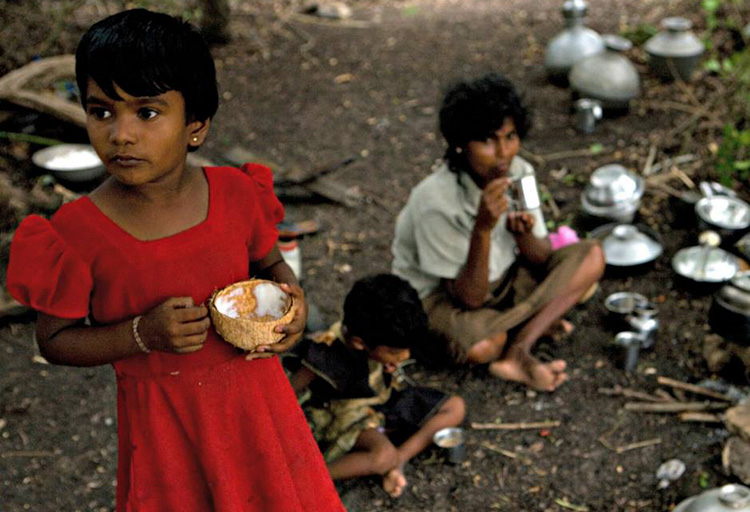
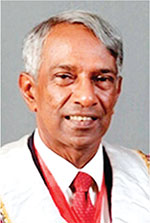 by Dr B.J.C.Perera
by Dr B.J.C.Perera
MBBS(Cey), DCH(Cey), DCH(Eng), MD(Paed), MRCP(UK), FRCP(Edin),
FRCP(Lon), FRCPCH(UK), FSLCPaed, FCCP, Hony FRCPCH(UK), Hony. FCGP(SL)
Specialist Consultant Paediatrician and Honorary Senior Fellow,
Postgraduate Institute of Medicine, University of Colombo, Sri Lanka.
Joint Editor, Sri Lanka Journal of Child Health
In an age of unprecedented global development, technological advancements, universal connectivity, and improvements in living standards in many areas of the world, it is a very dark irony that child food poverty remains a pressing issue. UNICEF defines child food poverty as children’s inability to access and consume a nutritious and diverse diet in early childhood. Despite the planet Earth’s undisputed capacity to produce enough food to nourish everyone, millions of children still go hungry each day. We desperately need to explore the multifaceted deleterious effects of child food poverty, on physical health, cognitive development, emotional well-being, and societal impacts and then try to formulate a road map to alleviate its deleterious effects.
Every day, right across the world, millions of parents and families are struggling to provide nutritious and diverse foods that young children desperately need to reach their full potential. Growing inequities, conflict, and climate crises, combined with rising food prices, the overabundance of unhealthy foods, harmful food marketing strategies and poor child-feeding practices, are condemning millions of children to child food poverty.
In a communique dated 06th June 2024, UNICEF reports that globally, 1 in 4 children; approximately 181 million under the age of five, live in severe child food poverty, defined as consuming at most, two of eight food groups in early childhood. These children are up to 50 per cent more likely to suffer from life-threatening malnutrition. Child Food Poverty: Nutrition Deprivation in Early Childhood – the third issue of UNICEF’s flagship Child Nutrition Report – highlights that millions of young children are unable to access and consume the nutritious and diverse diets that are essential for their growth and development in early childhood and beyond.
It is highlighted in the report that four out of five children experiencing severe child food poverty are fed only breastmilk or just some other milk and/or a starchy staple, such as maize, rice or wheat. Less than 10 per cent of these children are fed fruits and vegetables and less than 5 per cent are fed nutrient-dense foods such as eggs, fish, poultry, or meat. These are horrendous statistics that should pull at the heartstrings of the discerning populace of this world.
The report also identifies the drivers of child food poverty. Strikingly, though 46 per cent of all cases of severe child food poverty are among poor households where income poverty is likely to be a major driver, 54 per cent live in relatively wealthier households, among whom poor food environments and feeding practices are the main drivers of food poverty in early childhood.
One of the most immediate and visible effects of child food poverty is its detrimental impact on physical health. Malnutrition, which can result from both insufficient calorie intake and lack of essential nutrients, is a prevalent consequence. Chronic undernourishment during formative years leads to stunted growth, weakened immune systems, and increased susceptibility to infections and diseases. Children who do not receive adequate nutrition are more likely to suffer from conditions such as anaemia, rickets, and developmental delays.
Moreover, the lack of proper nutrition can have long-term health consequences. Malnourished children are at a higher risk of developing chronic illnesses such as heart disease, diabetes, and obesity later in life. The paradox of child food poverty is that it can lead to both undernutrition and overnutrition, with children in food-insecure households often consuming calorie-dense but nutrient-poor foods due to economic constraints. This dietary pattern increases the risk of obesity, creating a vicious cycle of poor health outcomes.
The impacts of child food poverty extend beyond physical health, severely affecting cognitive development and educational attainment. Adequate nutrition is crucial for brain development, particularly in the early years of life. Malnutrition can impair cognitive functions such as attention, memory, and problem-solving skills. Studies have consistently shown that malnourished children perform worse academically compared to their well-nourished peers. Inadequate nutrition during early childhood can lead to reduced school readiness and lower IQ scores. These children often struggle to concentrate in school, miss more days due to illness, and have lower overall academic performance. This educational disadvantage perpetuates the cycle of poverty, as lower educational attainment reduces future employment opportunities and earning potential.
The emotional and psychological effects of child food poverty are profound and are often overlooked. Food insecurity creates a constant state of stress and anxiety for both children and their families. The uncertainty of not knowing when or where the next meal will come from can lead to feelings of helplessness and despair. Children in food-insecure households are more likely to experience behavioural problems, including hyperactivity, aggression, and withdrawal. The stigma associated with poverty and hunger can further exacerbate these emotional challenges. Children who experience food poverty may feel shame and embarrassment, leading to social isolation and reduced self-esteem. This psychological toll can have lasting effects, contributing to mental health issues such as depression and anxiety in adolescence and adulthood.
Child food poverty also perpetuates cycles of poverty and inequality. Children who grow up in food-insecure households are more likely to remain in poverty as adults, continuing the intergenerational transmission of disadvantage. This cycle of poverty exacerbates social disparities, contributing to increased crime rates, reduced social cohesion, and greater reliance on social welfare programmes. The repercussions of child food poverty ripple through society, creating economic and social challenges that affect everyone. The healthcare costs associated with treating malnutrition-related illnesses and chronic diseases are substantial. Additionally, the educational deficits linked to child food poverty result in a less skilled workforce, which hampers economic growth and productivity.
Addressing child food poverty requires a multi-faceted approach that tackles both immediate needs and underlying causes. Policy interventions are crucial in ensuring that all children have access to adequate nutrition. This can include expanding social safety nets, such as food assistance programmes and school meal initiatives, as well as targeted manoeuvres to reach more vulnerable families. Ensuring that these programmes are adequately funded and effectively implemented is essential for their success.
In addition to direct food assistance, broader economic and social policies are needed to address the root causes of poverty. This includes efforts to increase household incomes through living wage policies, job training programs, and economic development initiatives. Supporting families with affordable childcare, healthcare, and housing can also alleviate some of the financial pressures that contribute to food insecurity.
Community-based initiatives play a vital role in combating child food poverty. Local food banks, community gardens, and nutrition education programmes can help provide immediate relief and promote long-term food security. Collaborative efforts between government, non-profits, and the private sector are necessary to create sustainable solutions.
Child food poverty is a profound and inescapable issue with far-reaching consequences. Its deleterious effects on physical health, cognitive development, emotional well-being, and societal stability underscore the urgent need for comprehensive action. As we strive for a more equitable and just world, addressing child food poverty must be a priority. By ensuring that all children have access to adequate nutrition, we can lay the foundation for a healthier, more prosperous future for individuals and society as a whole. The fight against child food poverty is not just a moral imperative but an investment in our collective future. Healthy, well-nourished children are more likely to grow into productive, contributing members of society. The benefits of addressing this issue extend beyond individual well-being, enhancing economic stability and social harmony. It is incumbent upon us all to recognize and act upon the understanding that every child deserves the right to adequate nutrition and the opportunity to thrive.
Despite all of these existent challenges, it is very definitely possible to end child food poverty. The world needs targeted interventions to transform food, health, and social protection systems, and also take steps to strengthen data systems to track progress in reducing child food poverty. All these manoeuvres must comprise a concerted effort towards making nutritious and diverse diets accessible and affordable to all. We need to call for child food poverty reduction to be recognized as a metric of success towards achieving global and national nutrition and development goals.
Material from UNICEF reports and AI assistance are acknowledged.
Opinion
Do opinion polls matter?
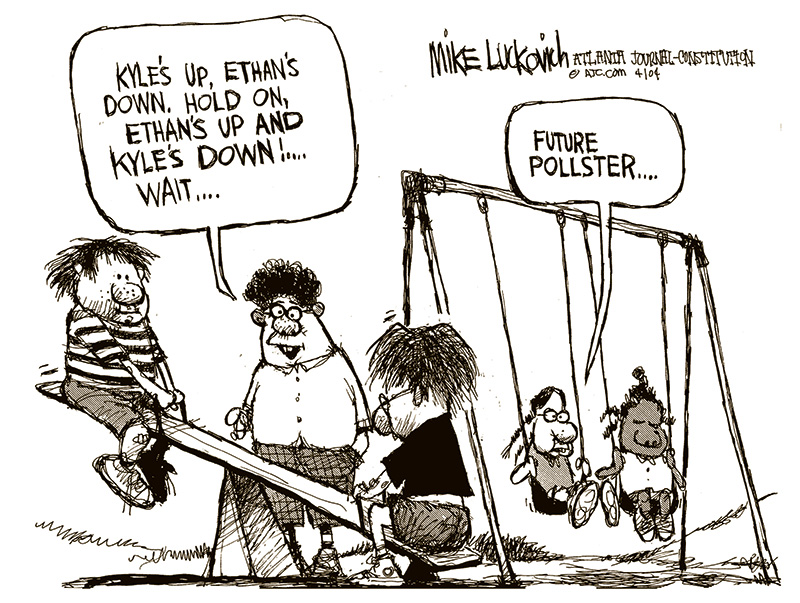
By Dr Upul Wijayawardhana
The colossal failure of not a single opinion poll predicting accurately the result of the Indian parliamentary election, the greatest exercise in democracy in the world, raises the question whether the importance of opinion polls is vastly exaggerated. During elections two types of opinion polls are conducted; one based on intentions to vote, published during or before the campaign, often being not very accurate as these are subject to many variables but exit polls, done after the voting where a sample tally of how the voters actually voted, are mostly accurate. However, of the 15 exit polls published soon after all the votes were cast in the massive Indian election, 13 vastly overpredicted the number of seats Modi’s BJP led coalition NDA would obtain, some giving a figure as high as 400, the number Modi claimed he is aiming for. The other two polls grossly underestimated predicting a hung parliament. The actual result is that NDA passed the threshold of 272 comfortably, there being no landslide. BJP by itself was not able to cross the threshold, a significant setback for an overconfident Mody! Whether this would result in less excesses on the part of Modi, like Muslim-bashing, remains to be seen. Anyway, the statement issued by BJP that they would be investigating the reasons for failure rather than blaming the process speaks very highly of the maturity of the democratic process in India.
I was intrigued by this failure of opinion polls as this differs dramatically from opinion polls in the UK. I never failed to watch ‘Election night specials’ on BBC; as the Big Ben strikes ‘ten’ (In the UK polls close at 10pm} the anchor comes out with “Exit polls predict that …” and the actual outcome is often almost as predicted. However, many a time opinion polls conducted during the campaign have got the predictions wrong. There are many explanations for this.
An opinion poll is defined as a research survey of public opinion from a particular sample, the origin of which can be traced back to the 1824 US presidential election, when two local newspapers in North Carolina and Delaware predicted the victory of Andrew Jackson but the sample was local. First national survey was done in 1916 by the magazine, Literary Digest, partly for circulation-raising, by mailing millions of postcards and counting the returns. Of course, this was not very scientific though it accurately predicted the election of Woodrow Wilson.
Since then, opinion polls have grown in extent and complexity with scientific methodology improving the outcome of predictions not only in elections but also in market research. As a result, some of these organisations have become big businesses. For instance, YouGov, an internet-based organisation co-founded by the Iraqi-born British politician Nadim Zahawi, based in London had a revenue of 258 million GBP in 2023.
In Sri Lanka, opinion polls seem to be conducted by only one organisation which, by itself, is a disadvantage, as pooled data from surveys conducted by many are more likely to reflect the true situation. Irrespective of the degree of accuracy, politicians seem to be dependent on the available data which lend explanations to the behaviour of some.
The Institute for Health Policy’s (IHP) Sri Lanka Opinion Tracker Survey has been tracking the voting intentions for the likely candidates for the Presidential election. At one stage the NPP/JVP leader AKD was getting a figure over 50%. This together with some degree of international acceptance made the JVP behave as if they are already in power, leading to some incidents where their true colour was showing.
The comments made by a prominent member of the JVP who claimed that the JVP killed only the riff-raff, raised many questions, in addition to being a total insult to many innocents killed by them including my uncle. Do they have the authority to do so? Do extra-judicial killings continue to be JVP policy? Do they consider anyone who disagrees with them riff-raff? Will they kill them simply because they do not comply like one of my admired teachers, Dr Gladys Jayawardena who was considered riff-raff because she, as the Chairman of the State Pharmaceutical Corporation, arranged to buy drugs cheaper from India? Is it not the height of hypocrisy that AKD is now boasting of his ties to India?
Another big-wig comes with the grand idea of devolving law and order to village level. As stated very strongly, in the editorial “Pledges and reality” (The Island, 20 May) is this what they intend to do: Have JVP kangaroo-courts!
Perhaps, as a result of these incidents AKD’s ratings has dropped to 39%, according to the IHP survey done in April, and Sajith Premadasa’s ratings have increased gradually to match that. Whilst they are level pegging Ranil is far behind at 13%. Is this the reason why Ranil is getting his acolytes to propagate the idea that the best for the country is to extend his tenure by a referendum? He forced the postponement of Local Governments elections by refusing to release funds but he cannot do so for the presidential election for constitutional reasons. He is now looking for loopholes. Has he considered the distinct possibility that the referendum to extend the life of the presidency and the parliament if lost, would double the expenditure?
Unfortunately, this has been an exercise in futility and it would not be surprising if the next survey shows Ranil’s chances dropping even further! Perhaps, the best option available to Ranil is to retire gracefully, taking credit for steadying the economy and saving the country from an anarchic invasion of the parliament, rather than to leave politics in disgrace by coming third in the presidential election. Unless, of course, he is convinced that opinion polls do not matter and what matters is the ballots in the box!
Opinion
Thoughtfulness or mindfulness?

By Prof. Kirthi Tennakone
ktenna@yahoo.co.uk
Thoughtfulness is the quality of being conscious of issues that arise and considering action while seeking explanations. It facilitates finding solutions to problems and judging experiences.
Almost all human accomplishments are consequences of thoughtfulness.
Can you perform day-to-day work efficiently and effectively without being thoughtful? Obviously, no. Are there any major advancements attained without thought and contemplation? Not a single example!
Science and technology, art, music and literary compositions and religion stand conspicuously as products of thought.
Thought could have sinister motives and the only way to eliminate them is through thought itself. Thought could distinguish right from wrong.
Empathy, love, amusement, and expression of sorrow are reflections of thought.
Thought relieves worries by understanding or taking decisive action.
Despite the universal virtue of thoughtfulness, some advocate an idea termed mindfulness, claiming the benefits of nurturing this quality to shape mental wellbeing. The concept is defined as focusing attention to the present moment without judgment. A way of forgetting the worries and calming the mind – a form of meditation. A definition coined in the West to decouple the concept from religion. The attitude could have a temporary advantage as a method of softening negative feelings such as sorrow and anger. However, no man or woman can afford to be non-judgmental all the time. It is incompatible with indispensable thoughtfulness! What is the advantage of diverting attention to one thing without discernment during a few tens of minute’s meditation? The instructors of mindfulness meditation tell you to focus attention on trivial things. Whereas in thoughtfulness, you concentrate the mind on challenging issues. Sometimes arriving at groundbreaking scientific discoveries, solution of mathematical problems or the creation of masterpieces in engineering, art, or literature.
The concept of meditation and mindfulness originated in ancient India around 1000 BCE. Vedic ascetics believed the practice would lead to supernatural powers enabling disclosure of the truth. Failing to meet the said aspiration, notwithstanding so many stories in scripture, is discernable. Otherwise, the world would have been awakened to advancement by ancient Indians before the Greeks. The latter culture emphasized thoughtfulness!
In India, Buddha was the first to deviate from the Vedic philosophy. His teachers, Alara Kalama and Uddaka Ramaputra, were adherents of meditation. Unconvinced of their approach, Buddha concluded a thoughtful analysis of the actualities of life should be the path to realisation. However, in an environment dominated by Vedic tradition, meditation residually persisted when Buddha’s teachings transformed into a religion.
In the early 1970s, a few in the West picked up meditation and mindfulness. We Easterners, who criticize Western ideas all the time, got exalted after seeing something Eastern accepted in the Western circles. Thereafter, Easterners took up the subject more seriously, in the spirit of its definition in the West.
Today, mindfulness has become a marketable commodity – a thriving business spreading worldwide, fueled largely by advertising. There are practice centres, lessons onsite and online, and apps for purchase. Articles written by gurus of the field appear on the web.
What attracts people to mindfulness programmes? Many assume them being stressed and depressed needs to improve their mental capacity. In most instances, these are minor complaints and for understandable reasons, they do not seek mainstream medical interventions but go for exaggeratedly advertised alternatives. Mainstream medical treatments are based on rigorous science and spell out both the pros and cons of the procedure, avoiding overstatement. Whereas the alternative sector makes unsubstantiated claims about the efficacy and effectiveness of the treatment.
Advocates of mindfulness claim the benefits of their prescriptions have been proven scientifically. There are reports (mostly in open-access journals which charge a fee for publication) indicating that authors have found positive aspects of mindfulness or identified reasons correlating the efficacy of such activities. However, they rarely meet standards normally required for unequivocal acceptance. The gold standard of scientific scrutiny is the statistically significant reproducibility of claims.
If a mindfulness guru claims his prescription of meditation cures hypertension, he must record the blood pressure of participants before and after completion of the activity and show the blood pressure of a large percentage has stably dropped and repeat the experiment with different clients. He must also conduct sessions where he adopts another prescription (a placebo) under the same conditions and compares the results. This is not enough, he must request someone else to conduct sessions following his prescription, to rule out the influence of the personality of the instructor.
The laity unaware of the above rigid requirements, accede to purported claims of mindfulness proponents.
A few years ago, an article published and widely cited stated that the practice of mindfulness increases the gray matter density of the brain. A more recent study found there is no such correlation. Popular expositions on the subject do not refer to the latter report. Most mindfulness research published seems to have been conducted intending to prove the benefits of the practice. The hard science demands doing the opposite as well-experiments carried out intending to disprove the claims. You need to be skeptical until things are firmly established.
Despite many efforts diverted to disprove Einstein’s General Theory of Relativity, no contradictions have been found in vain to date, strengthening the validity of the theory. Regarding mindfulness, as it stands, benefits can neither be proved nor disproved, to the gold standard of scientific scrutiny.
Some schools in foreign lands have accommodated mindfulness training programs hoping to develop the mental facility of students and Sri Lanka plans to follow. However, studies also reveal these exercises are ineffective or do more harm than good. Have we investigated this issue before imitation?
Should we force our children to focus attention on one single goal without judgment, even for a moment?
Why not allow young minds to roam wild in their deepest imagination and build castles in the air and encourage them to turn these fantasies into realities by nurturing their thoughtfulness?
Be more thoughtful than mindful?


